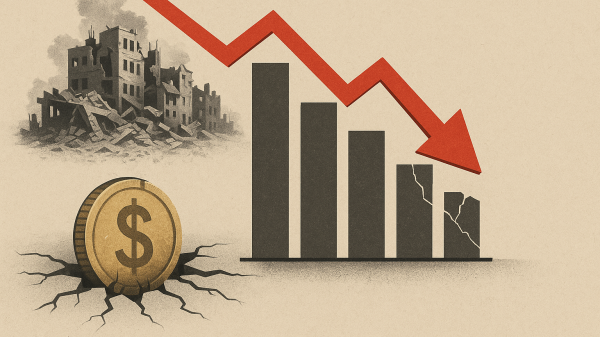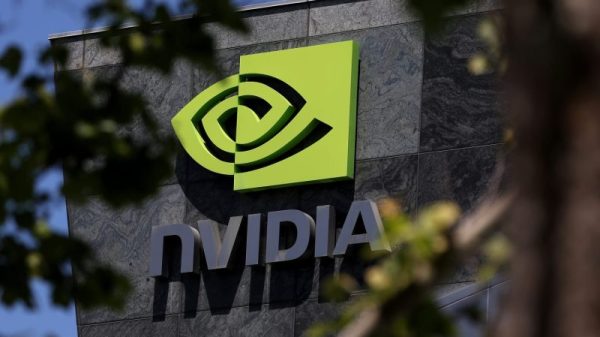It has been a year of layoffs.
The year 2025 has been marked by sweeping layoffs across the global technology sector, with companies large and small announcing deep job cuts as they grapple with overexpansion, cost pressures, and the growing shift toward artificial intelligence.
At least more than 112,000 employees have been laid off so far this year across 218 companies, according to layoffs.fyi, underscoring the breadth of the restructuring wave.
Apple on Monday became the latest to join the list, confirming that it is trimming roles across its sales teams.
The iPhone maker said the redundancies would impact only a small number of positions and were part of an effort to strengthen customer engagement.
But the announcement adds to the rapid succession of job reductions across the industry.
Tech giants respond to overexpansion and new AI demands; Amazon leads with up to 30,000 job cuts
Several major companies have acknowledged that the layoffs stem from a mix of overhiring during the pandemic and the need to divert resources into artificial intelligence and cloud infrastructure.
Amazon, one of the world’s largest employers, is in the middle of what may be its most extensive corporate downsizing to date.
The company is set to eliminate up to 30,000 corporate roles as part of a plan to streamline operations after what CEO Andy Jassy described as “years of overbuilding” to meet pandemic-era demand.
In a memo to employees, Jassy said most staff affected by the cuts would have 90 days to seek internal roles.
He emphasised that the changes were not directly driven by AI or financial pressures but were aimed at reducing “corporate fat” and enabling Amazon to operate as “the world’s largest startup,” according to the memo.
Amazon laid off more than 14,000 employees in late October, impacting units across cloud services, retail, devices, advertising, and grocery divisions.
State filings in California, Washington, New York and New Jersey show that engineering roles bore the brunt of reductions, accounting for nearly 40% of the more than 4,700 publicly recorded layoffs.
Another round of cuts is expected in early 2026.
While Amazon has stressed it is not replacing workers with AI today, it acknowledged that heavy investment is required to build out AI systems and cloud infrastructure, forcing reductions elsewhere.
As the cost of deploying AI falls, the company plans to allocate billions to strengthen AWS data centres and expand AI tools across its product lines.
Microsoft, Meta and Apple tighten operations
Microsoft is also deepening its restructuring.
In July, the company announced that it would dismiss around 9,000 employees, or just under 4% of its global workforce.
The layoffs span multiple teams and geographies and follow several prior rounds this year, including a performance-related reduction of under 1% in January and more than 6,000 cuts in May, followed by another 300 in June.
Microsoft employed 228,000 people as of mid-2024 and had already laid off 10,000 workers in 2023.
The company said the latest reductions were tied to its continued push to redirect spending toward artificial intelligence and cloud computing.
Meta has also begun tightening operations within its AI units.
The company is set to cut around 600 roles across its AI infrastructure division, Fundamental AI Research (FAIR) labs, and other product-related groups.
The layoffs were announced by Meta’s chief AI officer, Alexandr Wang, who joined the company this year as part of Meta’s $14.3 billion investment in Scale AI.
The cuts are aimed at flattening managerial layers and improving agility.
Apple’s reduction, though relatively modest compared to other tech peers, underscores that even the industry’s most valuable company is adjusting its workforce structure as it sharpens its focus on customer-facing operations.
Semiconductor and IT services firms pursue aggressive restructuring
The layoffs have not been limited to consumer-facing technology firms.
Chipmaker Intel is undergoing one of its most dramatic restructurings, planning to cut about 24,000 employees—roughly 22% of its global workforce—in 2025.
The reductions accompany a multiyear strategy to overhaul its manufacturing operations and reinvest in areas where it sees long-term competitive advantage.
Indian IT giant Tata Consultancy Services (TCS) has also reduced staff sharply, cutting 12,000 jobs in the quarter ending September 2025, mainly among mid- and senior-level employees.
The firm’s headcount fell by 20,000 in the second quarter, marking its steepest reduction on record.
Cisco has announced plans to eliminate around 4,250 jobs, or 5% of its global workforce, as it pivots away from traditional hardware and toward subscription-based software, cybersecurity, and cloud networking.
Government filings show cuts concentrated in its Milpitas and San Francisco offices.
Logistics and industrial employers feel pressure too
The restructuring wave extends beyond tech into logistics and industrial sectors.
United Parcel Service (UPS), which began the year with nearly 500,000 employees, has cut approximately 48,000 jobs so far.
The reductions are part of its Network Reconfiguration and Efficiency Reimagined program, designed to boost margins and restore investor confidence after a period of sluggish performance.
UPS said in its third-quarter earnings report released in late October that roughly 34,000 of the cuts were operational roles tied to a broader push for cost optimisation.
Companies cite AI, but experts warn of “AI-washing”
While several companies have pointed to artificial intelligence as a factor accelerating restructuring, experts caution that many firms may be overstating AI’s role in job cuts.
Some companies have explicitly said they are replacing workers with automation.
In May, Klarna CEO Sebastian Siemiatkowski said the fintech firm was able to shrink headcount by about 40% in part because of AI.
Duolingo said in April that it would stop using contractors for tasks AI can now manage.
Salesforce laid off 4,000 support roles in September, saying AI could handle half of all customer interactions.
But management experts warn that companies may be using AI as a convenient explanation for more traditional cost-cutting.
Peter Cappelli, a professor at the Wharton School, told CNBC there is “very little evidence” that AI eliminates jobs on the scale companies sometimes claim.
“Using AI to save jobs turns out to be enormously complicated and time-consuming,” Cappelli said. “There’s a perception that it’s simple and cheap, and it’s really not.”
Kevin Thompson, CEO of 9i Capital Group, said many firms are simply correcting for “pandemic bloat” after years of retaining staff amid market volatility.
The post Global layoffs hit new high in 2025 as AI reshapes workforces across Big Tech appeared first on Invezz
























